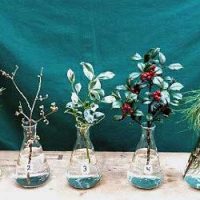Progress on the new Arboretum Loop Trail

If you’ve recently visited the Washington Park Arboretum, you may have noticed the new Arboretum Loop Trail is taking shape. Crews have continued to make progress through a very wet fall and cold winter, and they hope to open the first section in mid-February.
Part of the Arboretum’s long-term Master Plan, the project creates 1.2 miles of new trail, completing a 2.5 mile loop.
Helping Gardens Grow: How volunteers nurture new plants to support the Arboretum Foundation

If you’ve ever wandered the Washington Park Arboretum delighting in the year-round plant displays and wishing you could take a piece of the experience home, then be sure to explore the Pat Calvert Greenhouse on your next visit.
The greenhouse—and the volunteer effort behind it—were established by its namesake in 1959. Pat Calvert was inspired to create a space for Arboretum Foundation members to practice propagation, and she worked with the Foundation to secure funds to build the structure and start the program.
A glimpse into the past – a Volunteer Thank You

All non-profit organizations live and breathe with volunteers. The University of Washington Botanic Gardens counts on hundreds of volunteers and has prospered with their help for over 75 years. The major support group for the Washington Park Arboretum is the Arboretum Foundation, and the Northwest Horticultural Society supports many aspects of the Center for Urban Horticulture and the Elisabeth C. Miller Library.
Read moreCold? No Problem

The following conifers are among the cold-hardiest on earth!
1) Abies balsamea (Balsam Fir)
USDA Hardiness Zone 3: -40° to -30°F.
North American fir with range distribution as far north as Labrador, Canada.
Balsam fir is the most cold-hardy and aromatic of all firs.
2) Juniperus communis (Common Juniper)
USDA Hardiness Zone 2: -50° to -40°F.
The most widespread tree or shrub in the world!
January 2017 Plant Profile: Chimonanthus praecox

Very fragrant, early flowering wintersweet will make you smile. Experience it for yourself in the Arboretum’s Witt Winter Garden.
Read moreHappy Holidays from the Washington Park Arboretum!

1) Calocedrus decurrens Incense Cedar
This native of Oregon and south to Baja California was first described by Colonel John C. Fremont in 1846.
Incense cedar is often confused with Western Red Cedar (Thuja plicata), but is distinguished by its branchlets being held vertically, its narrow pyramidal habit, and by the lack of white stomata on the leaf undersides.
Located north of the Wilcox Bridge (marked by a sign) and east of the Pinetum Loop Trail.
A glimpse into the past – the Director’s Holiday Open House

For 13 years, the Director’s Holiday Open House was a tradition for all University of Washington Botanic Gardens staff (from the Center for Urban Horticulture and Washington Park Arboretum), Arboretum staff from the City of Seattle, all volunteers, Arboretum Foundation board members, and other friends and dignitaries. It began when John A. Wott moved to the Washington Park Arboretum in 1993 to become the first on-site director in many years.
Read moreGlimpse into the past – Puget Sound Rhododendron Hybrid Garden

Since the late 1930s, the Puget Sound region has been regarded by some as the best rhododendron growing region in the U.S.A., with documentation for over 2000 hybrid rhododendrons. Washington Park Arboretum has always been a leader in showcasing rhododendrons, including species and hybrids. The hybridization of rhododendrons was one of the legacies of both the former curator, Joe Witt, and the former director Brian O.
Read moreDecember 2016 Plant Profile: Arbutus unedo

Except for their bright red fruits and similar common names, the Strawberry Tree (Arbutus unedo) and the strawberry (Fragaria spp.) have nothing in common. This tree is valued as an ornamental broadleaf evergreen for gardens and it has a long history of appreciation in Western cultures.
The species name ‘unedo’ is attributed to Pliny the Elder who said of the fruit “Unum Tantum Edo” (Latin) meaning “I eat only one”.
November 2016 Plant Profile: Betula nigra

Betula Nigra, known as the river birch, has beautiful shaggy bark and is resistant to the bronze birch borer
Read more